Our last three blogs introduced you to many people who saved the lives of hundreds of children during the occupation of France. (Miss Mary: Irish Oskar Schindler [click here to read], An (extra)Ordinary Holocaust Story [click here to read], and The Marcel Network [click here to read]) Unfortunately, for every “feel good” story of survival, there are millions of stories when the outcome for a Nazi victim was death.
Most of us are familiar with Nazi direct killing methods including mobile asphyxiation vehicles, firing squads, the gas chambers, executions by hanging or a bullet to the back of the head, and lethal injections of poison. However, the Nazis employed other deadly methods to ensure their enemies or racially inferior persons would not survive. For example, the Nazis had a policy called “Death through work.” In other words, a prisoner was deliberately worked to death. Hitler’s directives, Aktion T4 and Aktion 14f13, were euthanasia programs targeting men, women, and children deemed to be mentally or physically disabled. Anyone who was chronically ill, blind, terminally ill, had Down Syndrome, crippled, or suffered an ailment or condition the Nazis considered as “asocial” were targets for the euthanasia programs. (Click here to read the blog Hitler’s Directives).
Today, our topic will focus on the Nazi killing centers that were euphemistically referred to as “birthing centers,” or “child-care” facilities for babies born to foreign women (and girls)⏤primarily Polish and Soviet. They worked as forced laborers for the Nazis and most of the babies were conceived as a result of rape at the place of enslavement. More than ninety percent of the babies born in these institutions died as a result of intentional neglect.
Did You Know?
Did you know there is a reason why you don’t see English or other language translations in many of the French museums? The Académie Française, or French Academy was founded in 1635 on the orders of King Louis XIII. Its mission was “to labor with all the care and diligence possible, to give exact rules to our language, to render it capable of treating the arts and sciences.” The academy is France’s official authority on the usages, vocabulary, and grammar of the French language. It is also responsible for ensuring the purity of the language and maintaining French as the only official language of France. The academy is increasingly sensitive to the modernization of the French language, and it is committed to preventing the anglicization of its language.
The latest controversy is the new identity card issued to each French citizen. The academy is threatening to take the government to court over the new card. You see, the government made the heinous “mistake” of giving French and English equal billing. The person’s name comes under the heading, “Prénoms/Given Names” or “DATE DE NAISS/Date of birth.” The permanent secretary of the academy states, “Who has decided to place French and English on an equal footing on this document? An essential principle is being jeopardized. The language of the Republic shall be French.”
The argument supporting the addition of an English translation is to ensure smoother transitions for French citizens traveling between EU countries. The argument against using English is that the new French identity card “no longer really has a French identity.”
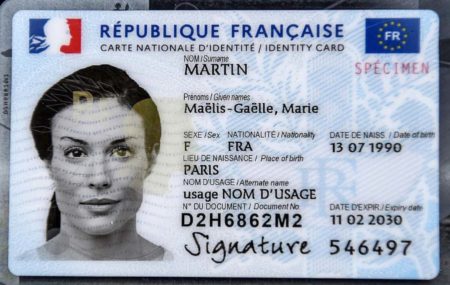
Now I’m going to switch gears on you. Today, you get a BOGO, or “Buy one, get one free” “Did You Know?” question. So, did you know that Oskar Schindler’s secretary, Mimi Reinhard, recently died in Israel at the age of 107? Mimi typed up the list of Jews that Schindler saved from extermination by the Nazis, and she was one of the twelve hundred Jews saved by Schindler. His story is told by director Steven Spielberg in the acclaimed 1993 film, “Schindler’s List.”
Nazi Birthing Centers
As the Nazis invaded and occupied eastern European countries such as Poland, they forced many of the enslaved women to work as forced laborers in industrial enterprises, on farms, building sites, and even private homes in Germany. Unintended pregnancies were common as German supervisors routinely raped many of the foreign women and girls. The Germans saw these pregnancies as a strategy employed by the females to get out of work. They desperately needed the women to work, and the babies were of no concern to them. In fact, the Nazis regarded a baby as a hindrance to the mother being able to work at full capacity.
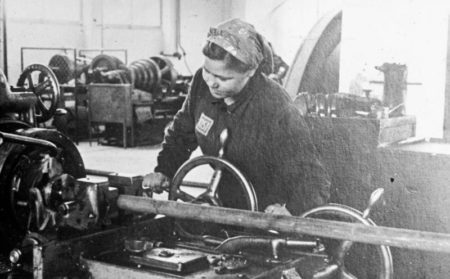
As the unintended births increased, the Nazis set up birthing centers for the foreign civilian workers. These facilities were known as Ausländerkinder-Pflegestätten, or “Nursing Homes for Children of Foreign Workers,” Ostarbeiterkinderpflegestätten, or “Eastern Worker Children Nurseries,” and Säuglingsheim, or “Baby Home.” There are about 400 to 450 Ausländerkinder-Pflegestätten established across Germany. We’ll touch on two of them: the Volkswagen (Rühen) and Velpke homes.
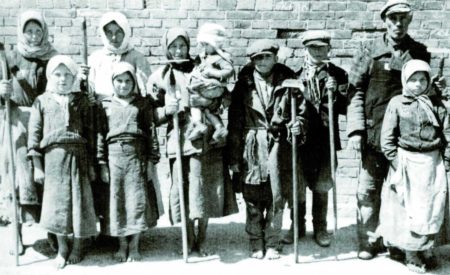
They sound very innocent, don’t they? Well, they weren’t. The Nazis considered these babies to be “very troublesome” and once they were taken away from the mothers, the babies were labeled as “abandoned.” Like the mentally and physically handicapped, the Nazis developed a plan to rid themselves of these unwanted children.
These birthing centers should not be confused with the Lebensborn facilities established by Heinrich Himmler and his Schutzstaffel (SS). Lebensborn was created for the purpose of raising the birth rate of children classified as “racially pure” and “healthy” based on Nazi ideology.
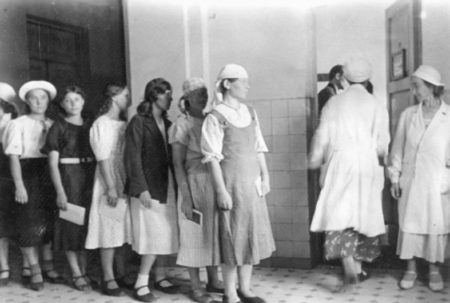
Nazi Policy
The babies were considered by the Germans to be “parentless” since they were taken from the mothers almost immediately after birth and placed in a facility. If the father was determined to be German, the pregnant laborer was usually forced to abort. All other babies were intentionally murdered through neglect. In other words, the children were starved to death or left to die by disease. The Nazis referred to this mass murder as Sonderbehandlung, or “Special Treatment.” Himmler decreed that if the mother was not able to return to work after giving birth, she and her baby were to be exterminated. The Nazis did not want the babies, they only wanted slave labor.
A handful of children survived. These were the babies or young children deemed by the Nazis to be of “Aryan” blood because of the mother’s lineage (e.g., Norwegian). The child was removed from the home and put into a German family to be “Germanized.”
It is estimated that between 100,000 and 200,000 infants were killed in the children’s homes between 1943 and 1945. This does not include babies born to women prisoners in the concentration camps and subsequently murdered (usually by drowning). Believe it or not, some of the baby killing centers continued for a month after Germany surrendered in May 1945.
The Velpke Children’s Home
The Velpke home was located between Wolfsburg and Helmstedt, Germany. It housed about 100 children whose mothers were workers on nearby farms. The facility operated between 1 May and 14 December 1944 in an old rusted corrugated iron barrack. It was closed because the Volkswagen plant in Wolfsburg needed additional barracks for its workers. Ninety-one children were buried in the Velpke cemetery. The surviving children were transferred to the Rühen home.
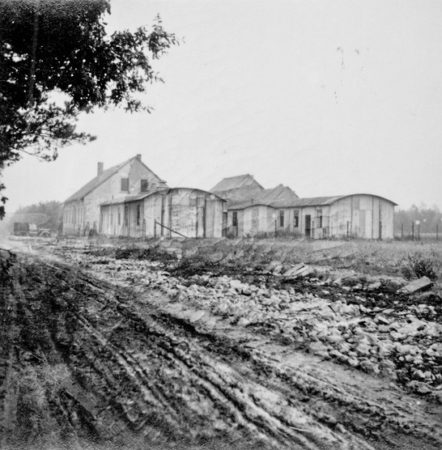
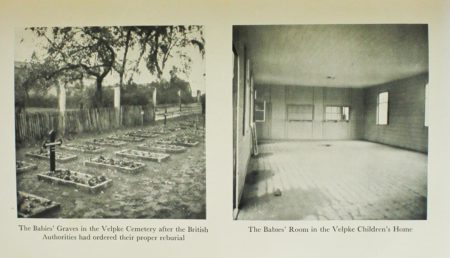
No doctor or nurse ever checked on the health of the children. Each child received a half-liter of milk per day⏤often sour. There was no running water and hygiene was non-existent. Most of the windows were broken and there was no electric light or telephones for emergencies. The children’s mothers were forced to pay the Germans one Reichsmark per day and when the child died, the Nazis charged the mother fifteen Reichsmarks for her child’s burial. The only responsibility of the on-site doctor was to issue death certificates. Three causes of death were primarily recorded: general weakness of life, dysentery, and diarrhea. “General weakness of life” was the Nazi euphemism for neglect.
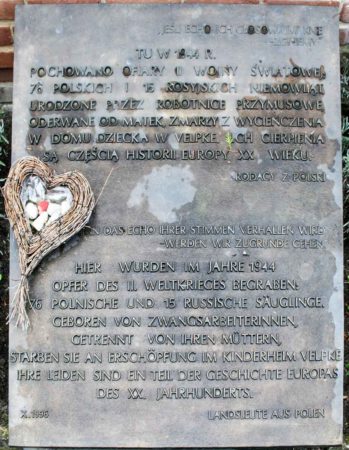
Rühen Home for Children of Forced Laborers
In the late 1990s, investigative journalists uncovered the story that Volkswagen was responsible for the deaths of up to four hundred infants. These were children of the slave laborers forced to work at the automaker’s factories. The children were kept in a home at Rühen, outside Wolfsburg, site of the company’s headquarters. It was opened in 1943 but by June 1944, Volkswagen had relocated the facility to a former POW camp about eight miles from the factory. The mothers were no longer able to see their babies. Eyewitnesses tell the stories of watching the babies starve to death. Their recollections tell us “The children were never cleaned up, they laid in wet diapers, and there was the bacteria … bed bugs and lice … It smelled badly there.” The milk given to the infants was sour. Almost every child in the Volkswagen children’s home died. American troops liberated Rühen on 12 April 1945 and the facility was closed.
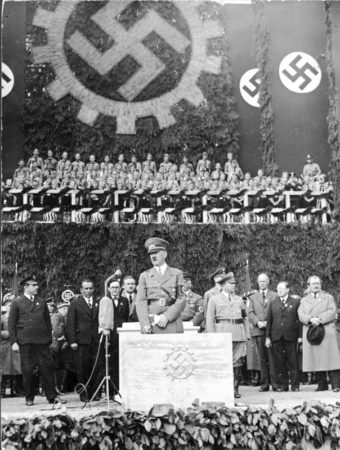
Postwar
Two war crime trials were conducted by the British in 1946 in Braunschweig and Helmstedt, Germany. The “Velpke Baby Home Case” and the “Rühen Baby Farm Case” brought administrators, doctors, nurses, and staff to justice for the murders of more than 450 children between the two facilities.
The “Velpke Baby Home Case” was held in March and brought to justice eight German officials involved in the murders of Polish and Russian infants at the Velpke Children’s Home. It was determined that eighty-four out of one hundred children died at Velpke between May and December 1944. The leaders of the foreign children’s homes, Heinrich Gerike (district leader) and Georg Hessling, were found guilty and hanged. The camp manager, Valentina Bilien, received a fifteen-year sentence and one of the doctors, Richard Demmerich, was sentenced to ten-years imprisonment. One of the defendants died in captivity while the remaining three defendants were declared innocent.
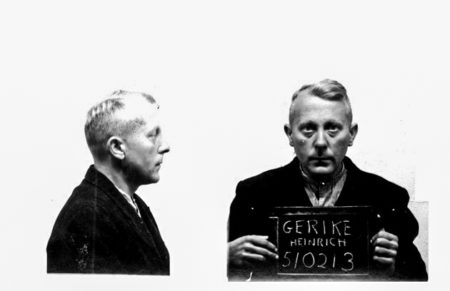
The “Rühen Baby Farm Case” brought charges of murder against ten staff members of the children’s home. The trial only focused on those individuals directly involved with the children’s deaths. The primary piece of evidence was a written report by a staff member. In the report, the author expressed the view that every child was inferior to Germans. A scientific tone was used to explain the actions of the doctors and nurses in their treatment of the infants who died. The report admitted that the infants were not fed properly but placed the blame on the mothers and the babies themselves. The head doctor, Hans Körbel and head nurse, Matron Ella Schmidt were found guilty and sentenced to death. Dr. Körbel was hanged while Schmidt’s sentence was commuted to life imprisonment. The barrack’s supervisor (Sister Liesel Bachor) was given five years. The other seven defendants were acquitted.
According to wartime documents, Volkswagen management knew about the deaths through monthly reports. During the trials, not one Volkswagen employee was held accountable. Volkswagen has admitted to using thousands of slave laborers during the war but has not owned up to its responsibility for the deaths of the babies.
Today
A federal data study determined that about 1,750 children in the United States died in 2020 as a result of being abused or neglected.
★ Learn More About the Nazi Birthing Centers ★
Fedewa, Lauren Elizabeth. Between Extermination and Child-Rearing: The Foreign Child-Care Facilities of Volkswagen and Velpke (2018). Graduate College Dissertations and Theses. University of Vermont 946. Click here to read the thesis.
Friedlander, Henry. The Origins of Nazi Genocide: From Euthanasia to the Final Solution. Chapel Hill: The University of North Carolina Press, 1997.
Nicholas, Lynn H. Cruel World: The Children of Europe in the Nazi Web. New York: Vintage Books, 2006.
United Nations War Crimes Commission. Law Reports of Trials of War Criminals, Volume VII. London: His Majesty’s Stationary Office, 1948. Click here to read the report.
Ms. Fedewa’s thesis addresses three themes providing the framework for the analysis of the Rühen and Velpke facilities. First is the conflict between two of the main goals of the Third Reich: racial cleansing and the exploitation of forced labor. Second, the question of whether orders for the treatment of the children came from senior Nazis or from local decision-making organizations. Third, the question as to whether the deaths of the children were a result of an explicit intent to cause death or a mere indifference to their conditions.
Disclaimer:
There may be a chance that after we publish this particular blog, the video links associated with the blog are no longer accessible. We have no control over this. Many times, whoever posts the video has done so without the consent of the video’s owner. In some cases, it is likely that the content is deemed unsuitable by YouTube. We apologize if you have tried to access the link and you don’t get the expected results. Same goes for internet links.
What’s New With Sandy and Stew?
The majority of the world is appalled and sickened by the Russian invasion of Ukraine. Each day brings new allegations against the Russian army for atrocities committed against ordinary Ukrainian citizens. As of today (I’m writing this on 5 April 2022), there are graphic eyewitness reports, images, and videos of Ukrainian citizens who have been brutally raped, murdered, executed, and kidnapped by Russian soldiers as they either retreat from or move through Ukrainian territory.
https://www.bbc.com/news/world-europe-60989121
https://www.bbc.com/news/world-europe-61003878
https://news.yahoo.com/close-ukraine-atrocity-photographs-touch-181344660.html
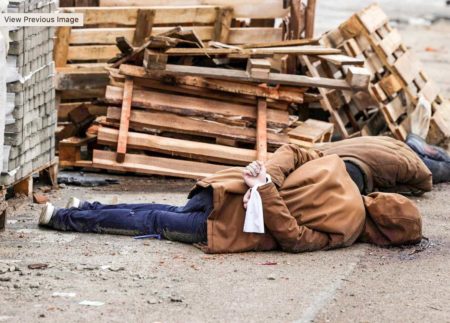
I am appalled just like everyone else around the world. However, I’m not shocked. Anyone who studies World War II and in particular, the Soviet advance on Berlin, will immediately recognize similar behavior patterns. As the Soviet army entered Berlin in April 1945 and the two weeks following, soldiers committed mass rapes, pillaged, looted, and murdered. Reports of mothers shooting their daughters and then committing suicide so as not to be raped are part of the official record. It seems the modern Russian army has not changed much almost eighty years later.
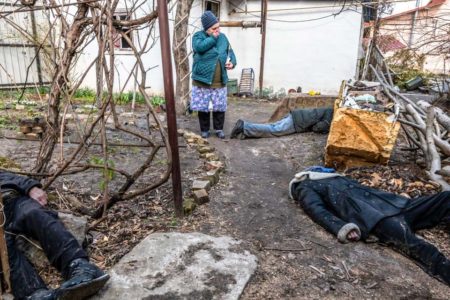
President Biden and others are calling Putin a war criminal and they are correct. As we saw with Hitler, it starts at the top. However, as pointed out in my two-part blog series, Hitler’s Enablers (click here and here to read the blogs), a dictator cannot accomplish these heinous crimes without assistance from their enablers. So, why has Allied intelligence not identified Putin’s enablers starting with the Russian officers most likely tied to the crimes? Begin with Gen. Sergei Shoigu, minister of defense over the past decade, and then move down the chain to the ranks of officers serving in the areas of the Ukraine where the crimes have been committed. Publish the names of these people and ensure they are aware of the consequences of their actions after the war has ended. Perhaps knowing they will be accountable for the crimes may have some effect on morale or future behavior. It couldn’t hurt.
There are many parallels with Putin’s Ukrainian game plan over the past decade compared to Hitler’s path to war during the mid-to-late 1930s. However, there are two aspects today that did not exist then: nuclear weapons and a global economy. Despite this, people and their ambitions do not change. There will always be despots in leadership positions. (Don’t forget Gen. de Gaulle’s famous quote, “The better I get to know men, the more I find myself loving dogs.”)

History can and will repeat itself.
Thank you to all of you who subscribe to our bi-weekly blogs. It seems there isn’t a day that goes by where we don’t increase our readership. Please let your history buff friends and family members know about our blog site and blogs.
Someone Is Commenting On Our Blogs
I’d like to thank all of you who contacted us regarding two recent guest blogs. Bernard’s blog, Miss Mary: Irish Oskar Schindler (click here to read) and Marianne’s blog, An (extra)Ordinary Holocaust Story (click here to read). Both blogs received a high “hit” rate for opening and reading. All your positive comments were very much appreciated by the two authors.
Carl S. reached out to us for two blogs: The Argentina Papers (click here to read) and The S-Bahn Serial Killer (click here to read). He “loved the blogs.” Thanks Carl and we hope you’ll enjoy all the future blog posts.
If there is a topic you’d like to see a blog written about, please don’t hesitate to contact me. I love hearing from you so keep those comments coming.
Why Would You Want to Buy Our Walking Through History Books?
Simple.
You like to travel and experience history and historical events. You like to see original buildings that had a significant impact on the people and events of the history you’re engaged with. You want to know the stories behind the brick and mortar in front of you.
The walking tour books are meticulously researched so you can go directly to those sites and learn about the building’s history as well as an introduction to some of the more interesting people associated with it.
Share This:
Follow Stew:
Find Stew’s books on Amazon and iBooks.
Please note that we do not and will not take compensation from individuals or companies mentioned or promoted in the blogs.
 Walks Through History
Walks Through History
Copyright © 2022 Stew Ross

Hi Stew,
Thank you for this weeks blog. It was a harrowing read, I was aware of the treatment of the women forced into slave labour and the outcome of their babies but this information provides more detail thank you. The brutal treatment of women and young girls by the German industries has been downplayed in WW2 history and I am pleased that you have highlighted this significant story.
Also thank you for your article about Ukraine and the brutality of the invading Russian troops. It makes me feel so angry that history is repeating itself – my Father still remembers how a group of POWs at Luckenwalde Stalag Luft 3A guarded a group of fleeing women refugees from the Soviets troops by sheltering them in one of the Barracks after the so called liberation of the Camp in April may 1945. The behaviour he witnessed when he went scavenging for food still haunts him.
Thanks Pat. Happy you enjoyed the story even in spite of the horrific endings. Tell Stan I said hello and congratulations on his 100th birthday. STEW